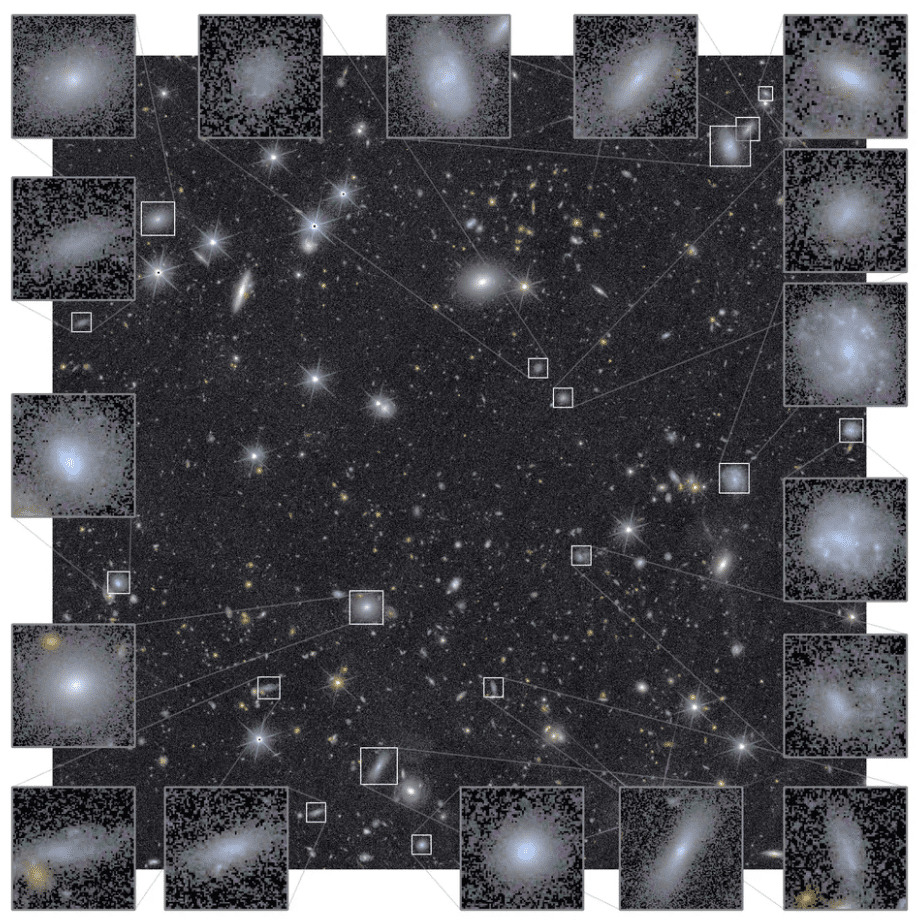What if some of the universe’s biggest mysteries were hiding in its smallest galaxies? The European Space Agency’s (ESA) Euclid spacecraft — dubbed the “dark universe detective” — is on a mission to uncover them. In a powerful new data release, researchers have identified an astonishing 2,674 previously unknown dwarf galaxies, revealing just how transformative this space mission could be for our understanding of cosmic evolution.
Let’s explore what these tiny galaxies mean for the big picture of the universe.
Euclid’s Mission: Peering Into the Dark Universe
Launched in July 2023, Euclid was designed to chart the most detailed 3D map of the cosmos ever built. Its primary focus? The elusive and invisible — dark matter and dark energy, which together make up about 95% of the universe.
Now, using just 25 high-resolution images from Euclid’s early mission data, a research team led by Francine Marleau at the University of Innsbruck has managed to identify and characterize 2,674 new dwarf galaxies.
“This work highlights Euclid’s incredible power to detect and study faint dwarf galaxies across different cosmic environments,” said Marleau.
Why Dwarf Galaxies Matter So Much
Despite their small size — housing only a few billion stars compared to hundreds of billions in galaxies like the Milky Way — dwarf galaxies play an outsized role in galactic evolution.
What Makes Dwarf Galaxies Special?
-
Ancient origins: Many dwarf galaxies formed in the early universe.
-
Cosmic collisions: Others are born from the debris of galaxy mergers.
-
Low luminosity: Their faint glow makes them hard to detect — until now.
-
Shapeshifters: Dwarf galaxies can be elliptical, spiral, or completely irregular.
-
Proxies for the early universe: Especially the irregular dwarfs, which resemble galaxies from billions of years ago.
This diversity helps astronomers trace how galaxies like our Milky Way formed and evolved over cosmic time.
Euclid’s Dwarf Galaxy Census: Key Findings
The Innsbruck-led team didn’t just find these galaxies — they analyzed their structure, brightness, distance, and environments, building one of the most detailed profiles of dwarf galaxies to date.
Here are the standout discoveries:
-
🌀 58% were elliptical dwarf galaxies
-
🌌 42% were irregular dwarf galaxies
-
🌟 Only 1% had globular clusters — dense groups of ancient stars
-
🔵 7% were identified as Blue Compact Dwarfs — small galaxies with rapid star formation and glowing blue cores
-
🕳️ About 4% contained dense galactic nuclei, possibly orbiting small black holes
These insights are crucial because many of these galaxy types are incredibly faint and typically invisible to traditional telescopes.
A Leap for Cosmic Cartography
Euclid’s ability to uncover this hidden class of galaxies is a game-changer for cosmic cartography and the study of dark matter halos — the mysterious structures that envelop most galaxies.
By mapping these dwarfs and their distribution, scientists are better able to:
-
Understand how galaxies form and interact
-
Explore the nature of dark matter
-
Trace the growth of cosmic structures over billions of years
“This catalog is just the beginning,” Marleau noted. Her team will continue mining Euclid’s expanding data trove to discover even more hidden galaxies.
A preprint version of the study is now available on arXiv, with peer review to follow.
FAQs About Euclid and Dwarf Galaxies
What is the Euclid mission’s main goal?
To map the geometry of the universe and study dark matter and dark energy using deep space observations.
Why are dwarf galaxies important in astronomy?
They help scientists understand how larger galaxies form, how dark matter behaves, and what the early universe looked like.
What’s special about Blue Compact Dwarf galaxies?
These tiny galaxies have intense star formation, giving them bright blue cores — useful for studying young stars and early cosmic conditions.
When will more Euclid data be released?
Euclid’s full mission will span at least 6 years, with regular data releases expected to fuel many new discoveries.
How many dwarf galaxies are orbiting the Milky Way?
Astronomers have identified over 50 satellite dwarf galaxies, including the Large and Small Magellanic Clouds.
What’s Next for Euclid?
As Euclid continues its mission, we can expect thousands more dwarf galaxy discoveries — each one a new clue in the vast puzzle of the universe.
Want to see where the universe is hiding its secrets? Keep your eyes on Euclid.
Read our previous article: Shenzhou-19 Crew Wraps Up Final Spacewalk on Tiangong Station

